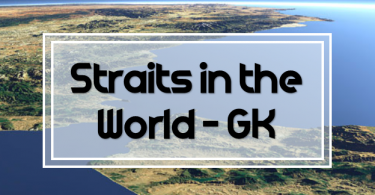ORIGIN AND EVOLUTION OF EARTH’S CRUST/ PHYSICAL CONDITIONS OF THE EARTH’S INTERIOR
Note: Answers are Bold and Underlined.
—————– move material in their path parallel to the direction of movement.
(a) S waves (b) P waves (c) L waves
In P waves particle motion consists of alternating compression and dilation. Particle motion is
parallel to the direction of propagation. Material returns to its original shape after the wave passes.
- is the densest of all layers.
(a) The core (b) The mantle (c) The crust
The densest layer of the Earth is the core. Sir Isaac Newton was the first person to form this conclusion.
3- has oxides of iron, magnesium and silicon.
(a) Upper mantle (b) Lower mantle (c) The crust
The inner mantle is mostly made up of silicon and magnesium sulphides and oxides. The density is between 4.3 and 5.4 g/cm3
- For every 108 feet descent below the surface of the Earth temperature rises bv
(a) 106°F (b) 18°F (c) L8^F (d) 16°F ’
- Temperature of ranges from 3000°C – 6650°C.
(a) Magma (b) Mantle (c) Core (d) Lava
- waves move objects at right angles to their direction of motion.
(a) P (b) S (c) L
S waves travel much slowly than P-waves. They do not travel through liquids. Their motion is at right angles to the direction the wave is travelling.
- Radius of solid inner core is____________ .
(a) 725 miles (b) 650 miles (c) 760 miles (d) 670 miles
- Liquid outer core is________
(a) 2520km (b) 2250km (c) 5220km
- Continental crust accounts only about________________ of the earth’s global surface.
(a) 1/3 (b) 1/4 (c) 2/3 (d) 1/8
- MohoroviCic’ Discontinuity Is the difference of density from_______________ .
(a) Crust to mantle (b) Core to mantle (c) Core to crust (d) Mantle to core
The MohoroviCic’ Discontinuity, or “Moho”, is the boundary between the crust and the mantle.
The continental crust consists of lower density material such as granite. Less common is basalt, a denser volcanic rock that is the primary constituent of the ocean floors.
________ of outer layer prevents the core from becoming a liquid or gas.
(a) Great weight and pressure (b) Heat and weight
(c) Density (d) Molten form
Silicon found in Earth’s crust is____________ .
(a) 5% (b) 27 J _%, (c) 46.6% (d) 2.1%
____ of mantle material produces convection currents beneath the surface of the earth.
(a) Circular motion (b) Horizontal movement
(c) Heat (d) Density
The earth is very hot inside, a current of heat flows from the core to the crust. This is called convection current and it also takes place in the mantle. This current cools down as it comes closer to the surface of the Earth. As a result, the rising of the current decreases and goes into horizontal direction along the bottom of the crust. When the current cools down, the convection current descends again and goes to the inner Earth. There the temperature increases and the current rises again. This goes on and on.
Earthquake waves _
(a) Increase
C________ Layer circumscribes the entire planet but is exposed only in ocean basins.
al (b) Sima (c) Lithosphere (d) Mesosphere


